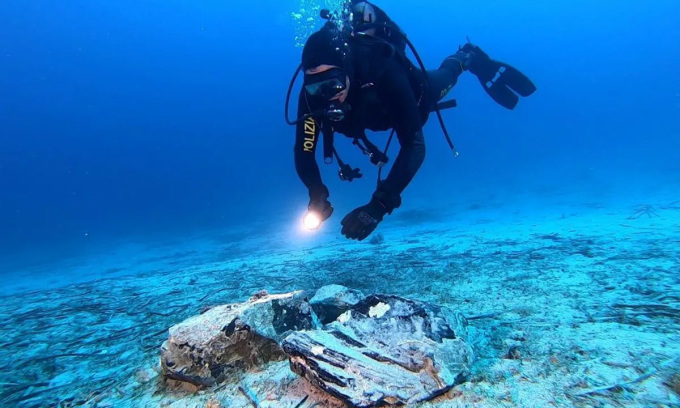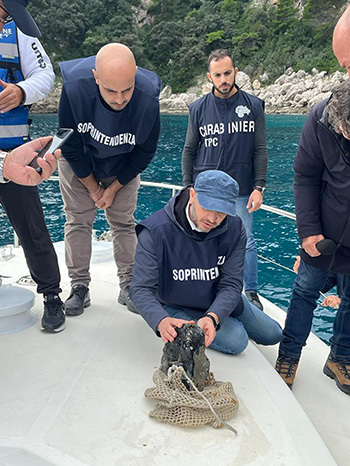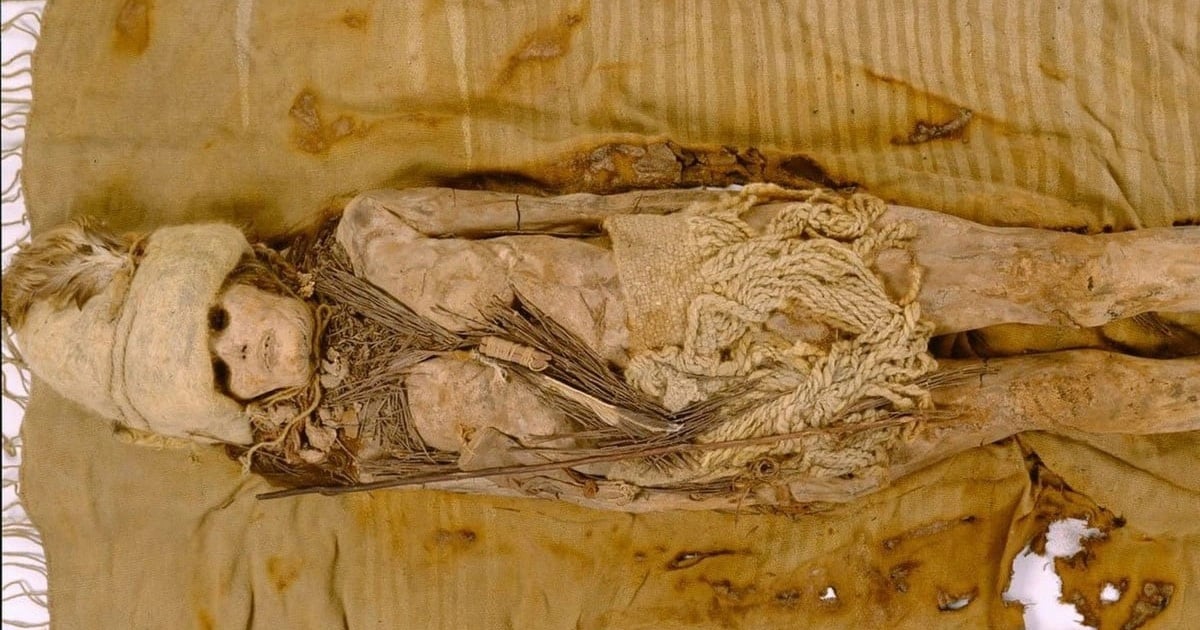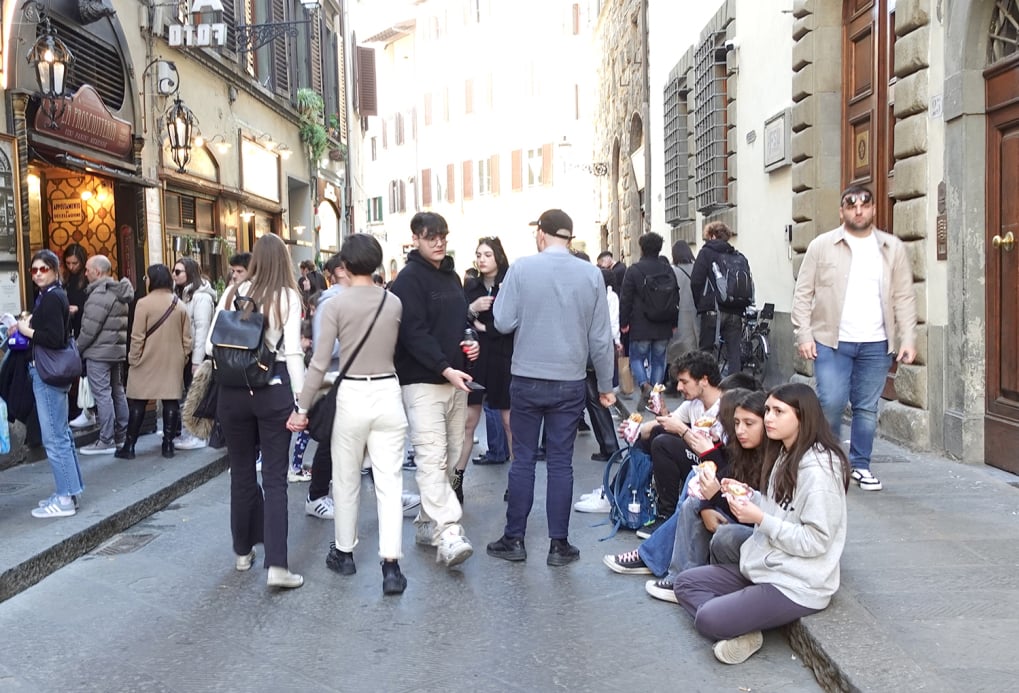Italy Obsidian blocks found among the cargo of a Neolithic cargo ship, possibly used to make sharp tools.

Divers salvage a chunk of obsidian from the seabed near the island of Capri, Italy. Photo: Naples Superintendency for Archaeology, Fine Arts and Landscape
A team of divers from the underwater unit of the Naples Police, Italy, salvaged a block of obsidian, also known as obsidian or volcanic glass, from the wreck of a Neolithic ship (around 7000 - 2000 BC) near the island of Capri, Live Science reported on November 22.
This natural glass block was salvaged from the seabed, at a depth of 30 - 40 m, on November 20. The block is the size of a large book, weighing about 8 kg. The surface of the block has clear marks of carving. Archaeologists believe that this is an obsidian core that can be used to make sharp pieces to make tools.

The obsidian block may have been the "core" for creating sharp-edged pieces used as stabbing and cutting tools. Photo: Naples Superintendency for Archaeology, Fine Arts and Landscape
Divers discovered the wreck site this year and announced it in October, but did not reveal its exact location to protect it from thieves. The obsidian core is the first artifact recovered from the wreck, but experts expect to find more similar stones in the area.
Archaeologists believe the newly recovered stone was part of the cargo of a Neolithic merchant ship that sailed more than 5,000 years ago. However, they have not been able to find the ship because the wood would have decomposed over such a long period of time.
The wreck lies in relatively deep water, making it difficult to study and salvage, the archaeological team said. The obsidian is being stored in Naples and will soon be cleaned, examined and preserved.
Obsidian is a black glass found in cooling lava. It breaks into sharp-edged pieces and was used by ancient people as a stabbing and cutting tool.
Experts are not sure where the newly discovered obsidian came from, but deposits of the stone are found on several volcanic islands in the Mediterranean, including Palmarola, near Naples, and Lipari, near Sicily. Marine archaeologist Sean Kingsley said the stone could have been used for trading or for making ritual objects, like Neolithic artifacts found in the Grotta delle Felci cave in Capri.
Thu Thao (According to Live Science )
Source link






![[Photo] Overcoming all difficulties, speeding up construction progress of Hoa Binh Hydropower Plant Expansion Project](https://vstatic.vietnam.vn/vietnam/resource/IMAGE/2025/4/12/bff04b551e98484c84d74c8faa3526e0)
![[Photo] Closing of the 11th Conference of the 13th Central Committee of the Communist Party of Vietnam](https://vstatic.vietnam.vn/vietnam/resource/IMAGE/2025/4/12/114b57fe6e9b4814a5ddfacf6dfe5b7f)

























































































Comment (0)